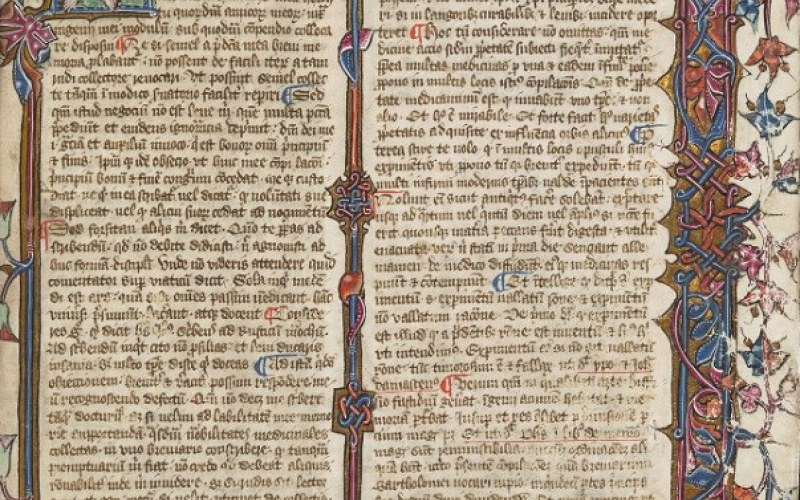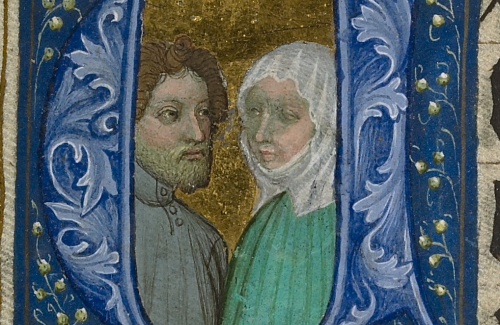#21 Breviarium Bartholomei
The next set of items concentrate on what make Pembroke's Special Collections really special. We’ve already mentioned some items where we have the only copy, but that applies to more of the collections than you might think.
We’re starting with an impressive medieval volume, that’s another part of our manuscript collection, and that you can see in its entirety on Digital Bodleian.
1. This is MS2, the Breviarium Bartholomei and the Sinonoma Bartholomei.
2. It was written by John of Mirfield, a Lay Brother at St Bartholomew’s in London, who died in 1407. He also wrote a religious text, the Floriarium.
3. The Breviarium is a medical text. It is not an original composition by John of Mirfield, but an amalgamation of the best known medical texts of his day.
4. The Sinonoma Bartholomei is, as you might expect from the name, a glossary of medical terms that are used throughout the Breviarium.While there is another full copy of the Breviarium in the British Library, Pembroke has the only copy of the Sinonoma that is known of.
5. Each page is 375 by 245mm.
6. At the very front is a calendar from 1487, composed according to the meridian line of the University of Oxford (image 2)
7. The fronticepiece of the main text shows St John the Baptist, and the arms of the Abbey at Abingdon, so it probably belonged to the Hospital of St John the Baptist, which was attached to the Abbey. It is not known when the book came to Pembroke, but it was probably in the possession of the first Master, Thomas Clayton.
8. At the end of the text, someone has drawn a small image of the Virgin Mary and Christ child.
9. At some point, the manuscript was lent to the Antiquarian Brian Twyne (1581-1644) at Corpus Christi College. He returned it, presumably to Clayton, having written in the margin! (image 4)
10. The binding is very old, although not exactly contemporary with the text. It has metal studs that would have kept the more fragile leather off the table, preventing it from being damaged during reading.

